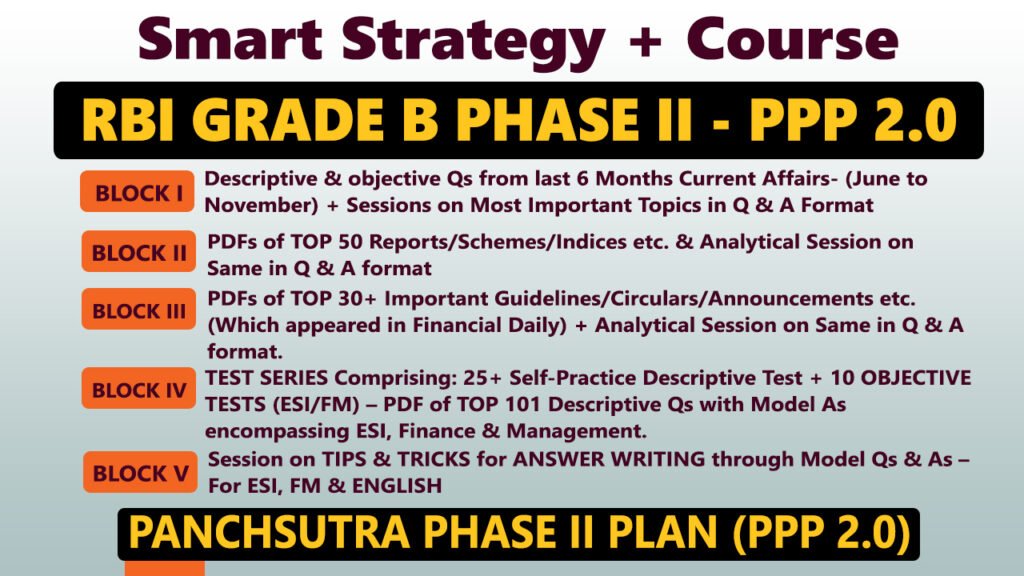Daily Current Affairs Quiz
31 August & 1 September, 2025
International Affairs
1. State Energy Efficiency Index (SEEI) 2024
Source: PIB
Context:
On 29 August 2025, the Bureau of Energy Efficiency (BEE) released the State Energy Efficiency Index (SEEI) 2024, in collaboration with the Alliance for an Energy Efficient Economy (AEEE). This is the sixth edition since its launch in 2018.
About SEEI:
- What it is: A composite index to measure, track, and compare the progress of Indian states and UTs on energy efficiency.
- Objective:
- Drive data-backed policy action.
- Encourage inter-state competition.
- Support India’s net-zero 2070 vision.
- Coverage: 36 States/UTs, evaluated using 66 indicators across 7 sectors — Buildings, Industry, Transport, Agriculture, DISCOMs, Municipal Services, and Cross-sector initiatives.
Performance Bands:
- Front Runners: >60% score
- Achievers: 50–60%
- Contenders: 30–50%
- Aspirants: <30%
Top Performers (SEEI 2024):
- >15 MToE category: Maharashtra
- 5–15 MToE category: Andhra Pradesh
- 1–5 MToE category: Assam
- <1 MToE category: Tripura
2. Shanghai Cooperation Organisation (SCO)
Context:
Prime Minister Narendra Modi met Chinese President Xi Jinping on the sidelines of the Shanghai Cooperation Organisation (SCO) Summit in Tianjin, China (hosting for the 5th time). Theme of the summit is “Upholding the Shanghai Spirit: SCO on the Move”. The meeting comes amid gradual improvement in bilateral engagement after recent disengagement along the India-China border.
About Shanghai Cooperation Organization (SCO)
- Nature: Regional intergovernmental organisation for political, economic, and security cooperation.
- Established: 2001 (Shanghai), evolved from the Shanghai Five (1996).
- Headquarters: Beijing, China.
- Membership:
- Permanent Members (8): China, Russia, India, Pakistan, Kazakhstan, Kyrgyzstan, Tajikistan, Uzbekistan.
- Observers: Afghanistan, Belarus, Mongolia, Iran (progressing to full membership).
- Dialogue Partners: Turkey, Sri Lanka, Nepal, Egypt, Saudi Arabia, Qatar, etc.
Objectives:
- Promote regional peace and stability.
- Cooperate against terrorism, extremism, and separatism.
- Strengthen trade, energy, and connectivity.
- Encourage cultural and people-to-people exchanges.
- Uphold multipolarity and non-interference in internal affairs.
3. Pradhan Mantri Viksit Bharat Rozgar Yojana (PMVBRY)
Announced by: PM Narendra Modi during his 12th Independence Day address (15 August 2025, Red Fort)
Outlay: Nearly ₹1 lakh crore
Target: 3.5 crore jobs in two years
Aim: Bridge the journey from Swatantra Bharat to Samriddha Bharat by supporting massive employment generation.
Key Features of the Scheme
Part A – Support to First-Time Employees
- Eligibility: First-time employees registered with EPFO, with salary up to ₹1 lakh.
- Benefit: One month’s EPF wage, up to ₹15,000, given in two instalments.
- 1st instalment: After 6 months of service.
- 2nd instalment: After 12 months of service + completion of a financial literacy programme.
- Savings Incentive: A portion of the benefit will be locked in a savings instrument/deposit account.
Part B – Incentives for Employers
- Eligibility: Employers hiring new employees with salaries up to ₹1 lakh.
- Benefit: Up to ₹3,000 per month per employee for 2 years.
- Special Focus: Manufacturing sector, where incentives will extend to the 3rd and 4th years.
Incentive Payment Mechanism
- Employees (Part A): Payment via DBT using Aadhaar Bridge Payment System (ABPS).
- Employers (Part B): Direct credit into PAN-linked accounts.
4. Govt to Launch AI-Based Adivasi Language Translation App ‘Aadi Vaani’
Context:
The Ministry of Tribal Affairs will launch the beta version of ‘Aadi Vaani’, an AI-based translation model for Adivasi languages, on Monday. The app will be tested under the Adi Karmayogi initiative for capacity-building in tribal districts.
Key Highlights:
- Languages Covered (Phase-1):
- Bhil, Santal, Gond, Munda, Kui, Garo.
- Features of Aadi Vaani:
- Translates speech and text between Hindi/English and the six Adivasi languages (both ways).
- Built on a database of 1 lakh+ sentences per language with the help of experts.
- Incorporates Adivasi folklore, traditional songs, and public speeches (including those of PM Modi) for training.
Adi Karmayogi Initiative
The Ministry of Tribal Affairs has launched the Adi Karmayogi initiative under the Dharti Aba Janjatiya Gram Utkarsh Abhiyaan to create a cadre of 20 lakh “change leaders” for last-mile delivery of welfare schemes in tribal villages. The Adi Karmayogi Initiative was officially launched on August 19, 2025, by the Ministry of Tribal Affairs.
About the Initiative
- Aims to build a cadre of 20 lakh “change leaders” in tribal villages.
- Focus on self-driven community solutions instead of dependency on external support.
- Each tribal village will prepare a “Village Vision 2030” plan as an aspirational roadmap.
- Adi Seva Kendras to be set up in 1 lakh villages as single-window service centres for welfare schemes.
Banking/Finance
1. RBI Data Shows Slow Credit and Deposit Growth in Rural India
Source: BL
Context:
RBI’s latest data highlights that Scheduled Commercial Banks (SCBs) have struggled to mobilise deposits and expand lending in rural India (“Bharat”) compared to semi-urban, urban, and metropolitan areas over the last 25 years.
Key Highlights:
Credit Growth (2000–2025)
- Rural loans increased 30 times but still less than the overall 41 times average.
- Cities and metros saw faster loan growth, mostly due to retail loans like housing, vehicles, and personal credit.
- Meaning: How much bank lending (loans) has grown in rural, semi-urban, urban, and metro areas.
Deposit Growth (2000–2025)
- Rural deposits rose 20 times, lower than the overall 28 times average.
- Semi-urban deposits grew 22 times, urban 26 times, while metros grew the fastest at 36 times.
- Meaning: How much money people and businesses keep in banks as savings, current accounts, or fixed deposits.
Credit-Deposit Ratio (CDR)
- Went up from 56% in 2000 to 80% in 2025.
- Meaning: Shows how much of the deposits collected by banks are being given out as loans.
- Higher ratio means banks are lending more compared to the deposits they get.
Urbanisation Trends
- Urban population increased from 28% in 2000 to 37% in 2024.
- Rural population reduced from 72% to 63% in the same period.
- Meaning: More people are moving to cities, fewer people live in villages compared to before.
Important Concept You Should Know for RBI Exam
About Scheduled Commercial Banks (SCBs)
| Aspect | Details |
|---|---|
| Meaning | Banks listed in the Second Schedule of the RBI Act, 1934. |
| Facilities Available | Eligible to borrow from RBI, use clearinghouse facilities, and access liquidity support. |
| Types Included | 1. Public Sector Banks 2. Private Sector Banks 3. Foreign Banks in India 4. Regional Rural Banks (RRBs) |
| Eligibility (Section 42(6), RBI Act, 1934) | – Capital Requirement: Minimum paid-up capital & reserves of ₹5 lakh (practically higher required). – Depositor Safety: Should not conduct business harmful to depositors. – Affairs Management: Must be in the interest of depositors and the public. – Compliance: Must satisfy RBI that it can follow RBI Act & Banking Regulation Act. |
2. RBI Likely to Approve Fino Payments Bank’s Conversion to Small Finance Bank
Context:
The Reserve Bank of India (RBI) is likely to approve Fino Payments Bank’s request for conversion into a Small Finance Bank (SFB) by March 2026, sources confirmed. This development comes after RBI recently approved AU Small Finance Bank’s (AU SFB) application to become a Universal Bank on August 7, 2025. Fino Payments Bank is a type of Scheduled Commercial Bank.
Scheduled Commercial Bank (SCB) vs Small Finance Bank (SFB)
| Feature | Scheduled Commercial Banks (SCBs) | Small Finance Banks (SFBs) |
|---|---|---|
| Definition | Banks listed in the Second Schedule of RBI Act, 1934; includes Public, Private, Foreign, and RRBs. | A type of Scheduled Bank focused on financial inclusion for underserved sections. |
| Scope of Operations | Universal banking – can serve all segments (corporates, retail, MSMEs, rural, urban, international). | Primarily serve small borrowers, MSMEs, farmers, low-income groups. |
| Priority Sector Lending (PSL) | Must lend at least 40% of ANBC to PSL. | Must lend at least 75% of ANBC to PSL. |
| Branch Requirement | No specific rural mandate (but regulated by RBI norms). | At least 25% of branches must be in unbanked rural areas. |
| Examples | SBI, HDFC Bank, ICICI Bank, RRBs, etc. | AU SFB, Equitas SFB, Ujjivan SFB, Jana SFB, etc. |
| Capital Requirement | Higher; varies depending on bank type (Private, Public, RRBs). | Minimum ₹200 crore paid-up capital (at licensing). |
| Nature | Broad-based, covers the entire economy. | Specialized, focused on financial inclusion. |
Eligibility to Become a Small Finance Bank (SFB)
- Promoters: Individuals or professionals with at least 10 years’ experience in banking/finance, and entities like NBFCs, MFIs, and Local Area Banks (LABs).
- Resident Requirement: Only resident individuals or entities owned and controlled by residents can promote an SFB.
- Foreign Shareholding: Allowed as per FDI policy for private banks (up to 74%).
- Minimum Capital: ₹200 crore paid-up capital at the time of licensing.
- Promoter Contribution: Minimum 40% of paid-up capital (locked for 5 years), to be brought down to 26% within 12 years.
- Fit & Proper: Promoters must meet RBI’s “fit and proper” norms – integrity, sound track record, and financial health.
- Activities Allowed: Can accept deposits and lend, but mainly to underserved groups like small businesses, farmers, MSMEs, and low-income households.
- Branch Rule: At least 25% of branches must be in unbanked rural centres.
- Priority Sector Lending (PSL): 75% of adjusted net bank credit must go to PSL categories.
3. RBI Imposes Penalty on Bandhan Bank
Source: ET
Context:
The Reserve Bank of India (RBI) imposed a penalty of ₹44.70 lakh on Bandhan Bank following a supervisory inspection related to its financial position as of March 31, 2024. This highlights the regulator’s continued vigilance over banks’ adherence to compliance norms.
Key Highlights:
- Reason for Penalty:
- Payment of commission-based remuneration to certain employees—contrary to RBI regulations.
- Manual interventions in backend account data without properly capturing audit trails/logs with user details.
- Statutory Basis:
- Penalty imposed under powers conferred by Section 47A(1)(c) read with Section 46(4) of the Banking Regulation Act, 1949.
- Violations included breach of Section 10(1)(b)(ii) of the Act and RBI’s September 14, 2020 circular on automation of income recognition, asset classification and provisioning.
Important Sections For Exams
- 47A(1)(c): RBI’s power to impose penalty on banks for non-compliance.
- 46(4): Defines the maximum penalty amount (₹1 crore + ₹50,000/day for continuing default).
- Section 10(1)(b)(ii): Bars banks from employing persons convicted of serious offences or found unfit to protect depositor/public interest.
- RBI’s role: Ensures banks comply with this, safeguarding governance and depositor confidence.
4. SEBI’s Cybersecurity Framework to Ease Burden
Source: ET
Context:
The Securities and Exchange Board of India (SEBI) has issued clarifications on its Cybersecurity and Cyber Resilience Framework (CSCRF), introducing graded compliance norms to reduce the burden on smaller market intermediaries.
Key Highlight:
- Large entities (e.g., top brokers, clearing members, depositories): Must comply with stringent cybersecurity controls and strict timelines due to their higher systemic risk.
- Mid-sized entities: Moderate compliance requirements with some relaxations.
- Small entities (small brokers, portfolio managers, RIAs, etc.): Simplified norms and extended timelines to reduce operational burden.
Objectives:
- Ensure robust cyber resilience across the securities ecosystem.
- Apply “proportional regulation” so that smaller intermediaries are not overburdened.
- Strengthen investor confidence by protecting against cyber threats.
Cybersecurity and Cyber Resilience Framework (CSCRF) – SEBI
The CSCRF is a regulatory framework introduced by the Securities and Exchange Board of India (SEBI) to safeguard the securities market from cybersecurity risks and ensure that intermediaries can withstand, respond to, and recover from cyberattacks.
Objectives:
- Protect investors’ data and market infrastructure.
- Ensure continuity of critical market operations despite cyber incidents.
- Enhance trust and resilience in India’s securities market.
5. Unit Linked Insurance Plans (ULIPs)
Context:
The government has recently revised the tax treatment of Unit Linked Insurance Plans (ULIPs), removing earlier ambiguities and bringing them in line with other market-linked investment products like mutual funds.
What are ULIPs?
- ULIPs combine life insurance cover + investment in equity, debt, or hybrid funds.
- A portion of the premium provides life insurance, while the remaining is invested.
- They have a lock-in period of 5 years, but long-term holding is advised for wealth creation.
Recent Update
- ULIPs not meeting exemption conditions are now treated as capital assets.
- A capital asset is a long-term property, held for personal or investment purposes, including tangible assets like land, buildings, and machinery.
- Gains from such ULIPs will be taxed as capital gains, instead of enjoying blanket exemptions.
- This applies uniformly to ULIPs, including those issued before February 1, 2021, ending earlier confusion over tax treatment.
Section 10(10D) Exemption Conditions
To qualify for tax exemption under this section:
- Premium ≤ 10% of the sum assured (for policies issued after April 1, 2012).
- Annual premium ≤ ₹2.5 lakh.
- If conditions are not met:
- ULIP policy gains → Capital gains tax
- Non-ULIP policies → Taxed as income from other sources
Significance of the Amendment
- Brings uniformity in taxation of ULIPs regardless of issuance date.
- Simplifies tax compliance and enables accurate computation of liabilities.
- Aligns ULIPs with modern investment norms, making them comparable with mutual funds.
- Encourages investors to make informed financial planning decisions.
6. Foreign Investors Pull Out ₹34.99 Crore from Indian Equities
Source: TOI
Context:
Foreign Portfolio Investors (FPIs) withdrew ₹34,993 crore (~$4 billion) from Indian equities in August 2025, the sharpest sell-off in six months. The move was triggered by steep US tariffs on Indian exports, high domestic valuations, and disappointing Q1 corporate earnings in some sectors.
Foreign Portfolio Investors (FPIs) in India
Who are they?
- FPIs are overseas investors who invest in Indian stocks, bonds, or mutual funds for short- to medium-term gains.
- They don’t control or manage companies; their investments are purely financial and easily reversible.
FPI vs FDI (Key Difference)
- FPI (Foreign Portfolio Investment):
- Short-term, in stocks/bonds.
- No control over companies.
- Highly volatile and quick entry/exit.
- FDI (Foreign Direct Investment):
- Long-term, in factories, infrastructure, or companies.
- Gives ownership and management control.
- Stable and less affected by short-term market swings.
Why do FPIs Pull Out Money?
- Global factor: US tariffs of up to 50% on Indian exports hurt sentiment.
- Domestic factor: High Indian valuations compared to cheaper global markets.
- Corporate earnings: Weaker-than-expected Q1FY26 results in some sectors.
Impact of FPI Outflows on Indian Market
- Stock Market: Heavy selling leads to market correction or volatility.
- Currency: Rupee tends to weaken as dollars move out.
- Liquidity: Outflows reduce liquidity in capital markets.
- Investor Sentiment: Domestic investors may panic, worsening the sell-off. Also highlights FPIs’ shift towards primary markets (IPOs) and debt instruments.
Agriculture
1. Krishi Nivesh 2.0
Source: Mint
Context:
The government is expanding digital technology use in agriculture by integrating public-private partnership (PPP) schemes into the Krishi Nivesh portal, launched in September 2024. This move aims to streamline agricultural investments, improve service efficiency, and attract private sector participation.
Krishi Nivesh Portal
Launched by the Ministry of Agriculture & Farmers’ Welfare to improve ease of doing agri-business and attract private investments in Indian agriculture.
What it is:
- A single-window digital platform for investors, agri-entrepreneurs, FPOs (Farmer Producer Organisations), and start-ups.
- Helps in exploring investment opportunities, government schemes, subsidies, and state-level incentives in the agriculture sector.
Objectives:
- Bring transparency and efficiency in agri-investments.
- Encourage private sector participation in agriculture and allied sectors.
- Support rural employment and farmer incomes through agri-infrastructure growth.
Public-Private Partnership (PPP)
- A Public-Private Partnership (PPP) is a collaboration between the government and the private sector to finance, build, and operate projects that serve the public.
Reason for Integration
- Agriculture faces post-harvest losses of 6% annually (~₹1.2 trillion) due to gaps in storage, processing, and logistics.
- PPP expected to mobilize private capital and expertise to bridge infrastructure deficits.
2. India Produces Mono-Floral Lavender Honey in Kashmir
Source: TH
Context:
The Council of Scientific and Industrial Research – Indian Institute of Integrative Medicine (CSIR-IIIM), Pulwama (J&K), has for the first time produced mono-floral lavender honey, positioning India among a select group of countries like France, Spain, Italy, Bulgaria, England, and Turkey in the global premium lavender honey market.
What is Mono-Floral Honey?
- Honey derived majorly from nectar of a single flower type (≥80% of nectar source).
- Has distinct flavor, aroma, and medicinal properties based on the flower source.
Why Lavender Honey in Kashmir?
- Kashmir’s climatic conditions favor lavender cultivation, promoted under the “Aroma Mission” of CSIR-IIIM, Jammu.
- Confirmed with 61% lavender pollen concentration through scientific testing.
- Validated using advanced technologies like fluorescence and scanning electron microscopy.
- Beekeepers place hives near lavender farms to ensure bees collect nectar mainly from lavender.
Purple Revolution
- Lavender cultivation introduced in Kashmir in the 1970s (from Bulgaria).
- Expanded significantly since 2014, now spread over 750 hectares across J&K.
- Over 3,000 families involved; featured in 2024 Republic Day Parade tableaux.
- Farmers, especially women from Self Help Groups, are being trained in cultivation and beekeeping.
Benefits of Lavender Cultivation
- Pest-repellent due to antifungal, antimicrobial, and antibacterial properties.
- Enhances pollination in apple and plum orchards by supporting bee ecosystems.
- Provides farmers with high-value returns and boosts rural bio-enterprises.
Government’s Role
- National Beekeeping & Honey Mission (NBHM): Provides training, quality testing, and market linkages.
- CSIR Aroma Mission: Expanding lavender cultivation (“Purple Revolution”) in J&K.
Facts To Remember
1. WHO & India Collaborate to Standardise Yoga Training
In a first-of-its-kind initiative, the World Health Organization (WHO), in collaboration with India, is working to standardise yoga training practices to ensure it serves as a preventive, promotive, and rehabilitative intervention.
2. Union Minister Jyotiraditya Scindia launches India Mobile Congress- IMC 25 application
Union Communications Minister Jyotiraditya Scindia, today launched the India Mobile Congress- IMC 25 application in New Delhi. With AI-based suggestions, improved networking, and interactive elements, the app aims to enhance users’ experience at the Expo.
3. Educate Girls NGO wins Ramon Magsaysay Award 2025, becomes first Indian organisation to get the honour
An Indian non-profit organisation, ‘Foundation to Educate Girls Globally’, dedicated to mobilise community and government resources for girls’ education in rural and educationally disadvantaged areas of India, has been named a 2025 Ramon Magsaysay Awardee.
4. NeGD Achieves Pan-India Integration of Nearly 2,000 e-Government Services on DigiLocker and e-District Platforms
The National e-Governance Division (NeGD), under the Ministry of Electronics and Information Technology (MeitY), has achieved the digital India milestone by enabling Pan-India integration of nearly two thousand e-Government services on DigiLocker and e-District platforms.



















